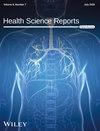The Efficacy and Safety of Negative-Pressure Wound Therapy Combined With Platelet-Rich Plasma in Chronic Refractory Wounds: A Systematic Review and Meta-Analysis of Randomized Controlled Trials
Abstract
Background and Aims
Chronic refractory wound is a disease that seriously impairs the quality of life of patients. Negative pressure wound therapy and platelet-rich plasma are commonly used to treat various types of wounds. Further research is necessary to explore the efficacy and safety of the combination of negative pressure wound therapy and platelet-rich plasma in treating chronic refractory wounds.
Methods
PubMed, Web of Science, EMBASE, Cochrane, CINAHL, CNKI, Sino Med, and Wanfang Med Online up until March 2024 were searched(PROSPERO No. CRD42024507963). Two investigators screened literature according to inclusion and exclusion criteria, evaluated bias and certainty of evidence using RoB 2.0 and GRADE. Stata 12.0 was used to analyze the data.
Results
A total of 35 randomized controlled trials involving 2495 participants were included. 34 studies were assessed as having some concerns, and 1 study as having high risk in the risk of bias assessment. The results of meta-analysis showed that effective rate (RR1.23, 95% CI [1.17, 1.30], p < 0.001; I2 = 44.7%, p = 0.013), healing time (WMD-9.32, 95% CI [−10.60, −8.03], p < 0.001; I² = 91.00%, p < 0.001), healing rate (RR1.76, 95% CI [1.50, 2.07], p < 0.001; I2 = 62.6%, p < 0.001), positive rate of bacterial(RR0.25, 95% CI [0.15, 0.40], p < 0.001; I² = 0%, p = 0.841), pain score (WMD-1.43, 95% CI [−2.14, −0.72], p < 0.001; I² = 96.5%, p < 0.001), incidence of complications (RR0.45, 95% CI [0.30, 0.68], p < 0.001; I² = 46.3%, p = 0.098), length of hospital stay (WMD-9.88, 95% CI [−13.42, 6.34], p < 0.001; I2 = 98.9%, p < 0.001), number of dressing changes (WMD-2.56, 95% CI [−4.28, −0.83], p = 0.004; I² = 98.9%, p < 0.001), white blood cell level (WMD-1.71, 95% CI [−2.00, −1.41], p < 0.001; I² = 33.9%, p = 0.195), c-reactive protein level (WMD-0.68, 95% CI [−1.04, −0.33], p < 0.001; I² = 88.8%, p < 0.001), erythrocyte sedimentation rate (WMD-6.09, 95% CI [−8.05, −4.13], p < 0.001; I² = 13%, p = 0.32), score of vancouver scar scale (WMD-1.78, 95% CI [−1.89, −1.66], p < 0.001; I² = 38.3%, p = 0.166) and preparation time of secondary repair (WMD-4.95, 95% CI [−7.03, −2.87], p < 0.001; I² = 84.7%, p < 0.001) had statistically significant effects. However, hospitalization costs (WMD1423.56, 95% CI [−4588.93, 7436.06], p = 0.643; I2 = 100%, p < 0.001) had no significant difference.
Conclusions
This study demonstrates that the combination of negative-pressure wound therapy and platelet-rich plasma can improve the efficacy and safety on chronic refractory wounds. Optimal parameter combinations, elucidation of pathogenesis and treatment mechanisms can be explored in the future.

 求助内容:
求助内容: 应助结果提醒方式:
应助结果提醒方式:


